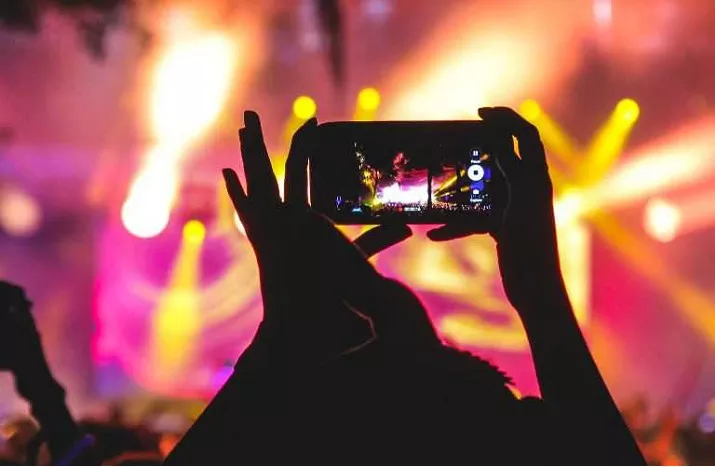Fashion shows have long been the highlight of the fashion industry, offering a platform for designers to showcase their latest collections to a select audience of industry insiders, celebrities, and the press. However, the advent of smartphones and the rise of social media have dramatically changed the landscape. While these technologies have democratized fashion, making it more accessible to the masses, they have also inadvertently contributed to the decline of traditional fashion shows. In this article, we will explore how smartphones are reshaping the fashion industry and what this means for the future of fashion shows.
The Rise of Smartphones and Social Media
The Democratization of Fashion
Smartphones have revolutionized the way we consume fashion. With high-quality cameras and instant access to social media platforms, anyone can now capture and share fashion moments in real-time. This shift has democratized fashion, allowing a broader audience to engage with the industry. Street style bloggers, influencers, and everyday fashion enthusiasts can now reach audiences that were once exclusive to fashion magazines and industry insiders.
Instant Gratification Culture
The instant nature of smartphones and social media has cultivated a culture of immediate gratification. Fashion enthusiasts no longer have to wait for the next issue of Vogue or a runway review. Instead, they can see and purchase the latest trends almost instantaneously. This shift has pressured designers and brands to adopt a “see now, buy now” model, which diminishes the anticipation and exclusivity that once surrounded fashion shows.
The Decline of Traditional Fashion Shows
Reduced Exclusivity
Fashion shows were once exclusive events where designers unveiled their collections to a select few. The presence of smartphones has eroded this exclusivity. As soon as a model steps onto the runway, images and videos are instantly uploaded to social media. This immediate sharing dilutes the unique experience of attending a fashion show, as everyone with an internet connection can now witness the collection in real-time.
Changing Business Models
The traditional fashion show model follows a seasonal calendar, with collections shown months before they are available in stores. However, the instant nature of smartphone sharing has disrupted this timeline. Consumers now expect to buy what they see immediately. As a result, brands are shifting to more direct-to-consumer approaches, reducing the need for traditional fashion shows that operate on a delayed gratification model.
See Also: Onerva Luoma’s Travelling Fashion Show Is For Library Nerds Only
The Rise of Digital Fashion Shows
Virtual and Augmented Reality
As smartphones and digital technologies evolve, so do the ways in which we experience fashion shows. Virtual and augmented reality (VR and AR) have emerged as innovative tools for designers to present their collections. These technologies offer immersive experiences that can be accessed from anywhere in the world, making fashion shows more inclusive and accessible.
Live Streaming and Social Media Integration
Many brands are now opting to live stream their fashion shows, integrating them with social media platforms. This approach allows for real-time engagement with a global audience. While this expands the reach of fashion shows, it also reduces the need for physical attendance, further diminishing the traditional runway show’s allure.
The Impact on the Fashion Industry
Increased Competition
The democratization of fashion through smartphones has led to increased competition. Independent designers and smaller brands can now showcase their work on social media without the need for expensive runway shows. This increased visibility has leveled the playing field, allowing emerging talent to compete with established fashion houses.
Shifts in Marketing Strategies
Marketing strategies in the fashion industry have also evolved. Brands now invest heavily in digital marketing and influencer partnerships to reach their target audiences. The reliance on traditional fashion show coverage in magazines and television has decreased, as social media provides more immediate and widespread exposure.
The Future of Fashion Shows
Hybrid Models
The future of fashion shows is likely to be a hybrid model, combining physical and digital elements. While traditional runway shows may continue for their symbolic and historical value, digital platforms will play a significant role in their dissemination. Brands may also explore new formats, such as interactive digital presentations and virtual showrooms.
Sustainability Considerations
The fashion industry is increasingly aware of its environmental impact. Traditional fashion shows, with their elaborate sets and extensive travel requirements, are not sustainable. Digital fashion shows offer a more environmentally friendly alternative, reducing the carbon footprint associated with these events.
Personalization and Interactivity
As technology advances, the fashion show experience will become more personalized and interactive. Augmented reality can allow consumers to virtually try on outfits, while artificial intelligence can curate personalized fashion shows based on individual preferences. These innovations will make fashion shows more engaging and tailored to each viewer’s interests.
Conclusion
Smartphones and digital technologies have undeniably transformed the fashion industry. While they have democratized fashion and increased accessibility, they have also contributed to the decline of traditional fashion shows. The future of fashion shows lies in a hybrid model that embraces both physical and digital elements, prioritizing sustainability, personalization, and interactivity. As the industry continues to evolve, it will be crucial for brands to adapt to these changes and find new ways to captivate and engage their audiences in the digital age.
Related topics:
- The New York Fashion Week Spring 2025 Schedule Is Out
- What Is The Black Tape Fashion Show
- Asia Album: Fashion Show Launches In Battaramulla, Sri Lanka

